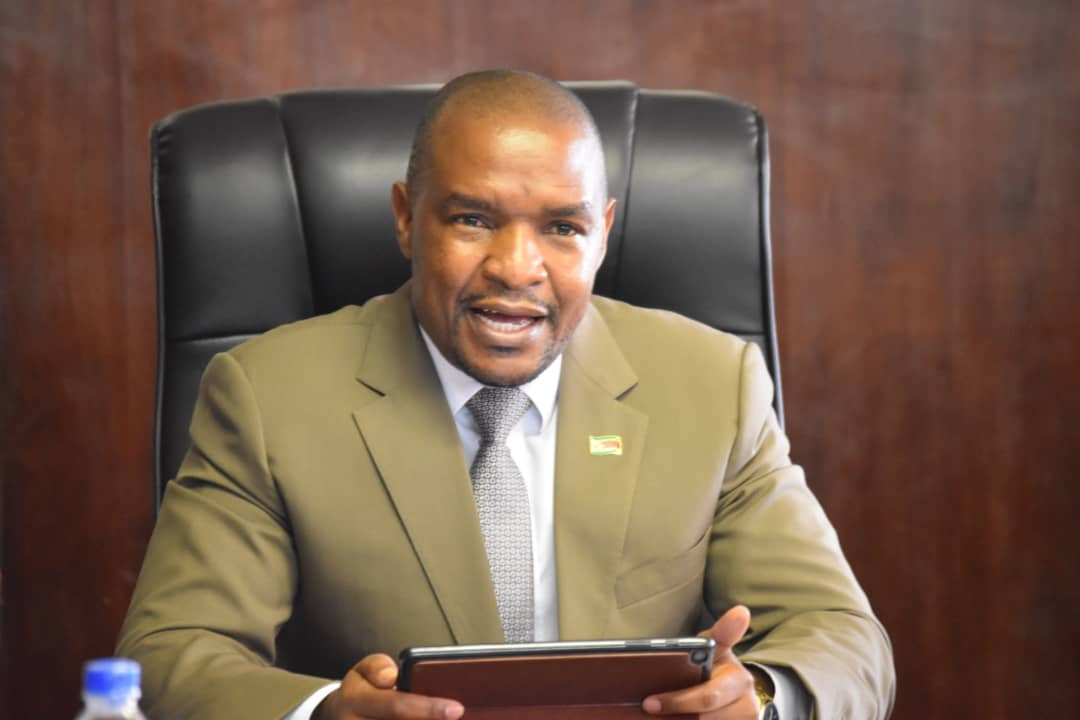
Transport minister Felix Mhona says government is planning to embark on new road projects in 2023, and to use local contractors on the projects. He says the Mbudzi Interchange, which is being constructed in Harare, and will connect the busy Harare-Masvingo HIghway, will be completed by the end of 2023. NewsDay (ND) reporter Harriet Chikandiwa spoke with the minister. The following are excerpts of the interview.
ND: Honourable minister, what is the current state of the transport sector in the country?
FM: The transport sector is very critical and a lot of work is being done across all transport subsectors. The transport sector plays a key role in the development of other sectors as it provides access to social and economic parameters in our country.
Being a landlocked country, transport continues to provide links to the region and the seas and at the same time providing access to social developmental aspects of the country, such as health, education, and in general, improving the social wellbeing of the Zimbabwean people.
Government took a bold stance to rehabilitate, upgrade and construct new infrastructure across the transport sector. That being said, we are all aware of the work being done, particularly on roads, which continue to provide the primary links to the grassroots level and at the same time provide access to the region and regional growth.
ND: How have you gone about fixing the state of roads?
FM: Mbudzi Interchange construction started officially in September 2022 and is expected to be completed in December 2023. The Harare-Masvingo-Beitbridge Highway upgrading and widening started in 2020 and 390km have been opened to traffic to date.
The expected completion date is August 2023. The Harare-Kanyemba Road upgrade started in September, and will be done in phases and completed by year 2025.
- 340km of Harare-B/bridge highway revamp complete
- Airports Company strikes mega hotel deal
- Chinese chrome smelters wreak havoc on Gweru’s roads
- 340km of Harare-B/bridge highway revamp complete
Keep Reading
ND: What challenges have you faced and how are you addressing them?
FM: The state of the country’s roads prompted government to act by declaring the national roads a state on national disaster by His Excellency the President of the Republic of Zimbabwe, ED Mnangagwa. The Transport and Infrastructural Development ministry with other key stakeholders launched the Emergency Road Rehabilitation Programme Phase 1, which is being implemented in phases.
Currently, government has provided funding for the implementation of ERRP II for urgent repair works on the road network. The programme is expected to run for three years, with an estimated cost of US$400 million.
The ERRP II is split into four categories, with the first category targeting emergency works; mainly grass cutting, pothole patching and clearance of the drainage systems; and the second category runs for six months targeting road reseals and regravelling.
The third category runs for nine months and focuses on reconstruction and rehabilitation. The final category will concentrate on bridges construction of cyclone-damaged structures dating back to 2000.
To date, the ERRP II has achieved 24 336,9km for rehabilitation and maintenance works. Cumulatively, 390km of the Beitbridge-Harare Road is now open to traffic. Government will keep pushing such projects, with government starting work on the next phase of the same road and the Harare-Chirundu Highway.
For the budget year (2022), the ministry planned to gravel 10 200km of road. To date, 24 000km have been achieved. This performance has been achieved due to additional resources that were released by Treasury and the Zimbabwe National Road Administration (Zinara) in the supplementary budget.
ND: What opportunities are there in the transport and road sectors?
FM: The ministry is always prepared to partner with private players in infrastructural development. Projects like the Mbudzi Interchange, the upgrading and modernisation of Beitbridge Border Post and expansion of Robert Gabriel Mugabe International Airport are testament to government’s mantra that Zimbabwe is open for business.
For the transport sector, there are plenty of opportunities for private players to partner government in projects such road construction, rehabilitation and expansion of airports, rehabilitation of rail infrastructure and the rehabilitation of the country’s border posts.
ND: How has the sector contributed to the economy?
FM: Transport is essential to the efficiency of an economy, bringing together the inputs used in the production of goods and services and getting output from the production process to customers.
Very few economic activities can take place without the transportation factor and the mobility it provides. Infrastructural development is also a catalyst for economic development and you will notice that the second republic has invested heavily in infrastructure so as to spur economic growth.
The ministry has been implementing a deliberate policy of utilising local contractors on most of the road projects. This policy has led to the capacitation of local contractors, thus increasing competitiveness in the construction sector. The aviation sector has also grown significantly despite the debilitating effects of the COVID-19 pandemic.
ND: In some communities, roads are not looking good. How soon can we expect rehabilitation?
FM: The ministry will work hard in ensuring that no one and no place is left behind as is the mantra of His Excellency the President ED Mnangagwa. The emergency road rehabilitation programme is being implemented in phases and some works will start next year in 2023 just after the rainy season in the communities not yet covered.
ND: How much budgetary support do you have for 2023?
FM: You will notice that the second republic has been deliberately using infrastructural development as a means of driving economic growth. This means ministries responsible for infrastructural projects have been getting bigger purses from Treasury to fund projects.
For the ministry, Treasury is funding huge projects like ERRP2 and the Harare-Masvingo Highway. However, there will always be competing priorities as government also funds important sectors like health and education from the same purse.
It is thus imperative to us as a ministry to utilise our allocation from Treasury efficiently in order to achieve our goals. It is also incumbent upon us a ministry to forge partnerships with the private sector so as to reduce the burden on Treasury.
ND: What can we expect in 2023?
FM: You can expect the ministry to continue to work with the same vigour in ensuring that the state of our roads, rail, airports and inland water infrastructure is continuously improved.
The ministry will work hard in ensuring that major projects such as Harare-Masvingo-Beitbridge Highway, Mbudzi Interchange, ERRP2, Harare-Kanyemba Road and Robert Gabriel Mugabe International Airport expansion are completed.
You can also expect the ministry to embark on new projects such as the modernisation of Chirundu and Forbes border posts.










